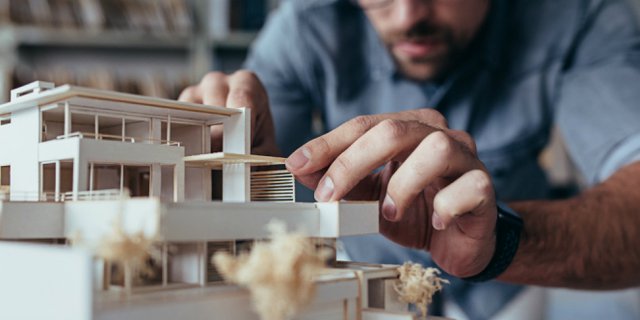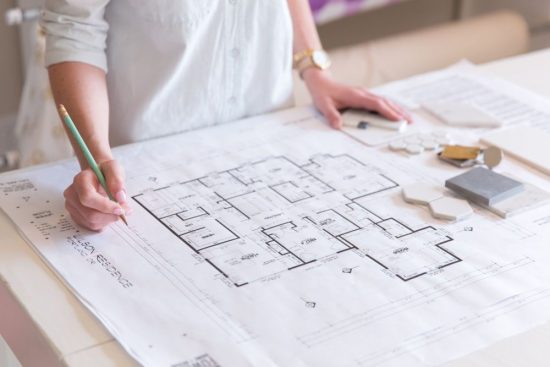Home is a place to stop for the best rest, especially after a day of tiring activities and work. However, a sense of comfort will not be obtained if the residential design or furniture is not ergonomic. What is meant by non-ergonomics is that the building is not friendly to the dimensions of the human body or anthropometry. It is therefore important to apply anthropometric measurements in architecture. Buildings that pay attention to the dimensions of the human body or anthropometry can realize the accessibility of building occupants. It’s important to apply architectural anthropometry in designing buildings in order to minimize possible accidents while doing activities.
Knowing Anthropometry
Anthropometry is a term derived from Ancient Greek, namely “anthros” which means human or man and “metron” which means measurement. Anthropometry is a human measurement that tends to focus on the dimensions of the human body. Anthropometry developed as a science that studies the classification and identification of human race differences and the effects of diet and environmental conditions on growth.
Today anthropometry has become very important and has developed into the area of ergonomics, the science of adjusting machines and the work environment for the people who use them. Anthropometric measurements that can be performed on humans in general include measurements of mass, length and height, width, depth, circumference (rotation), curvature (arc), soft tissue measurements (skin folds).
Architectural Anthropometry
Basically, anthropometry affects various industries, processes, services, products and so on. In addition, anthropometric measurements have a significant role in optimizing the manufacture of a building design. Dimensions and the ability of human movement are very important in determining the overall design of the building.

The basic principle of anthropometry is that building designs must be adapted properly to suit the dimensions of the human body and human movement. Than people have to adapt to fit the design of the building. The importance of buildings that are in accordance with human needs, will produce ergonomic principles that are useful in daily activities.
Meanwhile, the application of architectural anthropometry is generally closely related to ergonomics and accessibility. So what is meant by ergonomics and accessibility?
Ergonomics and Accessibility
In the field of architecture, the terms ergonomics and accessibility must be familiar. Ergonomics is a multi-disciplinary science. In practice, many apply other sciences such as psychology, social, culture, mechanical engineering to the design of work systems. Ergonomics is closely related to the functional characteristics of humans, for example, such as the ability to sense, response, memory, the optimum position of the hands, feet and so on.
The application of ergonomics in designing a product or room focuses on the interaction between humans and daily activities. In practice, ergonomics has a close relationship with anthropometry or the dimensions of the human body.

This is what can then realize accessibility in a building or residence. Accessibility is one of the guidelines that need to be considered in designing buildings, especially residential buildings. Residential or building needs to meet the technical requirements of facilities and accessibility. In this case, there are several things that need attention, namely :
- Safety, namely every building that is general in an environment, that is, everyone can reach all places or buildings that are general in an environment.
- Usefulness, that is, everyone must be able to use all places or buildings that are common in an environment.
- Independence, that is, everyone must be able to reach, enter and use all public places or buildings in an environment without the need for the help of others.
The fulfillment of the accessibility principle is stated in the Regulation of the Minister of Public Works Number 30/PRT/M/2006. In fulfilling this principle to establish architectural anthropometry, a quality anthropometric measuring instrument of the human body is needed.
Also Read : The Importance of Anthropometry in Architecture, Supports Mobility and Space
The Most Accurate Anthropometric Measuring Tool
The results of anthropometric measurements in designing residential buildings must be accurate and precise. Therefore, a measuring instrument is needed that supports these accurate results. Here is a selection of the best measuring tools that can be used :
Portable Anthropometry Kit for University
Metrisis – Portable Anthropometry produced by Solo Abadi Indonesia is an anthropometric measuring instrument derived from the anthropometric chair which is packaged in a portable form, so that the measuring instrument can be moved or carried anywhere easily. Like an innovation, portable anthropometry can be used to measure up to more than 100 dimensions of the human body.
The function of this tool is to carry out anthropometric measurements that are carried out carefully and prioritize the accuracy of the data. This instrument offers measurement capabilities of up to 100 measurements. In addition, its portable form makes this tool can be used unlimited time and done anywhere.
Anthropometric kits from Solo Abadi have been sent to various departments in Indonesia. Currently, 8 Portable Anthropometry kits from Solo Abadi have been used, one of which is the Department of Medicine, Islamic University of Indonesia.
Anthropometric measuring instrument products from Solo Abadi have also been widely used as learning support facilities in the department of room design and product design at a number of universities in Indonesia. The following are the details of the Anthropometry Portable Kit product.
Contact Us To Get Anthropometry Products
Get anthropometric measuring tools from Solo Abadi by filling in the available ask for price. You can also connect directly through our WhatsApp, because we are ready to contact you immediately.








